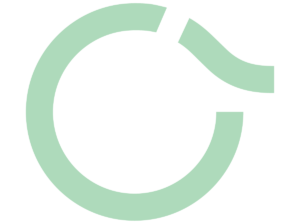Osteopathy is a holistic form of healthcare that focuses on the diagnosis, treatment, and prevention of health problems through the manipulation of the musculoskeletal system. For individuals suffering from headaches, osteopathy offers a non-invasive, drug-free approach that can provide significant relief by addressing the root causes of pain. Here’s how osteopathy can help with headaches:
1. Understanding the Causes of Headaches
Before treatment, an osteopath will perform a thorough assessment to identify the type and cause of the headache. Headaches can be caused by a variety of factors, including tension, stress, neck or back problems, poor posture, or jaw issues. Common types of headaches osteopaths treat include:
Tension Headaches: Often caused by muscle tightness in the neck, shoulders, or scalp, these headaches typically present as a dull, pressure-like pain.
Cervicogenic Headaches: These headaches originate from issues in the cervical spine (neck) and can result from poor posture, injuries, or degenerative conditions.
Migraines: Osteopathy may help alleviate some of the symptoms of migraines by addressing musculoskeletal tension, which can be a contributing factor.
Understanding the specific cause of the headache is essential for an effective treatment plan.
2. Manual Therapy Techniques
Osteopathy uses various manual therapy techniques to relieve tension, improve circulation, and address musculoskeletal imbalances that can contribute to headaches:
Soft Tissue Manipulation: This involves gentle massage of the muscles and soft tissues around the neck, shoulders, and scalp. Soft tissue manipulation helps release muscle tension, improves blood flow, and reduces pressure that may be contributing to headaches.
Cranial Osteopathy: A subtle technique that focuses on the skull and the bones around the head and face. Cranial osteopathy aims to relieve stress and tension in the tissues surrounding the brain and spinal cord, helping alleviate headaches. It is particularly beneficial for tension headaches and migraines.
Joint Mobilization: Gentle mobilization of the joints in the neck and upper back can improve range of motion, reduce stiffness, and relieve pain. This technique is especially effective for cervicogenic headaches that originate from neck dysfunction.
Muscle Energy Techniques (METs): These involve the patient actively contracting their muscles against a force applied by the osteopath. METs can help stretch tight muscles and improve joint mobility, which can reduce the frequency and intensity of headaches.
3. Posture and Ergonomic Advice
Poor posture, especially in modern lifestyles where many people spend long hours sitting at desks or using computers, can be a major contributing factor to headaches. Osteopaths assess a patient’s posture and provide advice on how to correct it to prevent strain on the neck, back, and shoulders.
Osteopaths might recommend:
Postural Correction: Advice on maintaining a neutral spine position when sitting or standing to reduce tension in the neck and shoulders.
Workstation Ergonomics: Adjusting the height of your desk, computer screen, or chair to promote better posture and reduce the risk of developing headaches from prolonged poor posture.
4. Stress Management
Stress can lead to muscle tension, especially in the neck and shoulders, which is a common cause of tension headaches. Osteopaths often address the physical effects of stress by releasing muscle tension through manual therapy. Additionally, they may recommend techniques such as deep breathing, mindfulness, or relaxation exercises to help manage stress levels.
5. Lifestyle and Activity Modifications
Osteopaths recognize that lifestyle factors can play a significant role in the occurrence and severity of headaches. To help reduce headaches, osteopaths may offer advice on:
Hydration: Dehydration is a common trigger for headaches, so maintaining adequate hydration is crucial.
Exercise: Regular physical activity can improve circulation, relieve muscle tension, and promote overall well-being, all of which can help reduce the frequency of headaches.
Sleep: Osteopaths may offer tips on improving sleep quality, as poor sleep is another contributing factor to headaches.
6. Holistic Approach
Osteopathy treats the body as a whole, meaning that headaches are not treated in isolation but as part of a broader issue. For example, an osteopath may also look at issues with the jaw (such as temporomandibular joint dysfunction, or TMJ), the spine, or other areas that may be contributing to headaches. By addressing the entire musculoskeletal system, osteopathy ensures that treatment is comprehensive and aims to correct underlying imbalances that contribute to headaches.
7. Prevention and Long-Term Relief
A key aspect of osteopathic treatment is preventing future headaches. Osteopaths provide long-term strategies to maintain musculoskeletal health and prevent headaches from recurring. These strategies may include:
Regular Osteopathic Check-Ups: Routine visits to monitor musculoskeletal health and address any emerging issues before they become severe.
Ongoing Exercises: Tailored exercise programs that help maintain posture, flexibility, and strength in the neck, back, and shoulders.
Conclusion
Osteopathy offers a comprehensive approach to managing headaches through manual therapy, postural correction, stress management, and lifestyle adjustments. By addressing the root causes of headaches, osteopaths provide long-term relief, helping patients reduce the frequency and intensity of headaches while improving overall well-being. This holistic, patient-centered approach makes osteopathy an effective treatment option for those suffering from various types of headaches.


